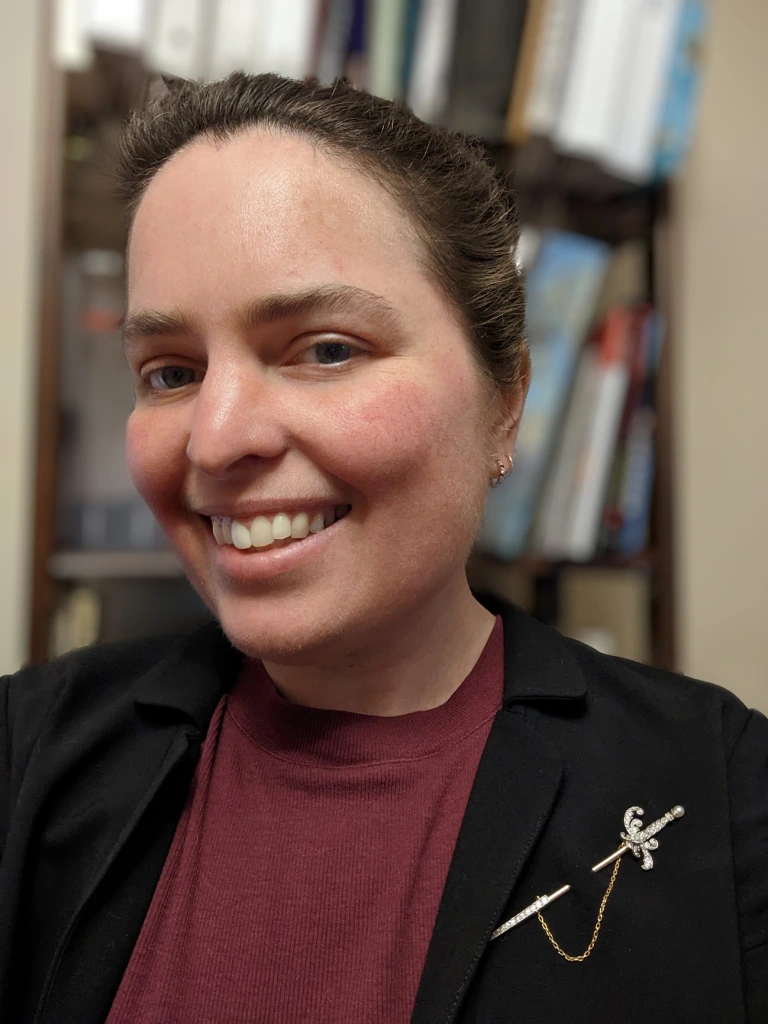Ursula Whitcher’s new story “The Last Tutor” is inspired by memories of her great aunt Beattie, who led a colorful yet mysterious life. Find “The Last Tutor” in our [May/June issue, on sale now!]
by Ursula Whitcher

I want to make one thing clear up front: the family in “The Last Tutor” is not my family. The protagonist, Isekendriya, has two abusive parents: their father is willfully ignorant, their mother overtly cruel. I’m not above using fiction to work out how I feel about real problems, but that’s not what I’m doing here: I made the whole nasty tangle up.
But sometimes you don’t write to reproduce yourself. Sometimes you write to imagine a context where someone like you could exist. That’s a maxim I picked up from Heather Rose Jones, who uses it to describe her alternate-history Alpennia series, which is focused on lesbian relationships and women’s community in a nineteenth century that never was. I’ve used some of the same strategies to create the far-future planet of Nakharat and the people who live there.
When I was inventing Nakharat, I was thinking about family, specifically my mother’s father’s family. Let me tell you about my great-aunt Beattie. Beattie was born in Shanghai in 1907. She was the youngest in a family of many sisters and one brother (my great-grandfather). I have exactly one photo of her: she’s the tiny girl sitting on a pillar and wearing a bow that’s almost as big as her head.
I met Beattie only once, when she was in her eighties and I was about eight. I was almost as tall as she was. Beattie had flown to California and taken the Greyhound all the way to Oklahoma, wearing her favorite necklace, a piece of gold from the Chinese mint strung on a silken cord. In Oklahoma, she collected my grandfather and forced him to take her to McDonald’s.
I didn’t want to go to McDonald’s myself—I was a weird kid who preferred dim sum and frog’s legs—but making my grandfather go there was an astonishing feat. Gus inhabited the role of an English gentleman with the stubbornness of a former commando and the meticulousness of someone whose Englishness had often been questioned. But Beattie, though his youngest aunt, was still his aunt. She didn’t have to play along. I expect she enjoyed my grandfather’s protests nearly as much as the French fries.
But sometimes you don’t write to reproduce yourself. Sometimes you write to imagine a context where someone like you could exist.
Gus and Beattie drove from Oklahoma to Baltimore, where my family lived. We all went to the Chinese grocery store, where Beattie insisted on buying a canned rice pudding, which she described as economical and delicious. My sister and I hid it in the lowest cupboard.
Beattie never inflicted the pudding on us: she was too busy teaching us how to string pearls. With a necklace of real pearls, you need a knot between each bead, so that if the string breaks, the pearls will not scatter and be lost. We used ordinary beads for practice, but Beattie told me approvingly that I would never lack a trade: I was now prepared for pearl-smuggling.
That was the family story: Beattie was a smuggler. Anecdotes collected around her, the way another woman might have collected scarves. I can’t tell you what she dealt in when, or what laws she skirted, with a fact-checker’s precision. I do know her ventures included importing wine. Before the Chinese Civil War, she sold liquor to the Shanghai Club, though she was doubly barred from club membership, because she was a woman and because she was mixed race. Later, trading on her expertise in French fashion, Beattie founded a dress shop in Hong Kong. And of course she had many opinions about the quality of pearls.
Like my great-aunt Beattie, my character Isekendriya’s forebears were gleeful capitalists. Their grandfather, for example, “had walked off the steppe, chosen a name meaning ‘ruler of rulers,’ and refactored Fountain Company security for half the continent.”
Ise shares something else with their grandfather, and with Beattie: a sense of momentum. As a smart kid in ’80s and ’90s suburbia, I learned a lot of strategies for deflecting attention. I was quiet, cautious, eccentric only in unthreatening ways. I’d slide through social situations as smoothly as possible, so I could go back to reading a book. Ise does exactly none of these things. Sometimes they won’t get along; sometimes they can’t. They respond to conflict in one way: running toward it as fast as possible.
When writing Ise, I had to take the brakes off. I lent them layers of bossiness, stubbornness, and inexorability that I’d forgotten I possessed. I got much better at noticing when I was angry or terrified—those aren’t feelings that Ise slides around.
That’s the weird thing about inventing imaginary places. Sometimes, if you build a place where you might exist, your sense of your own self expands. I’m not planning a career smuggling jewels. But somehow, I don’t feel as cautious as I used to.

